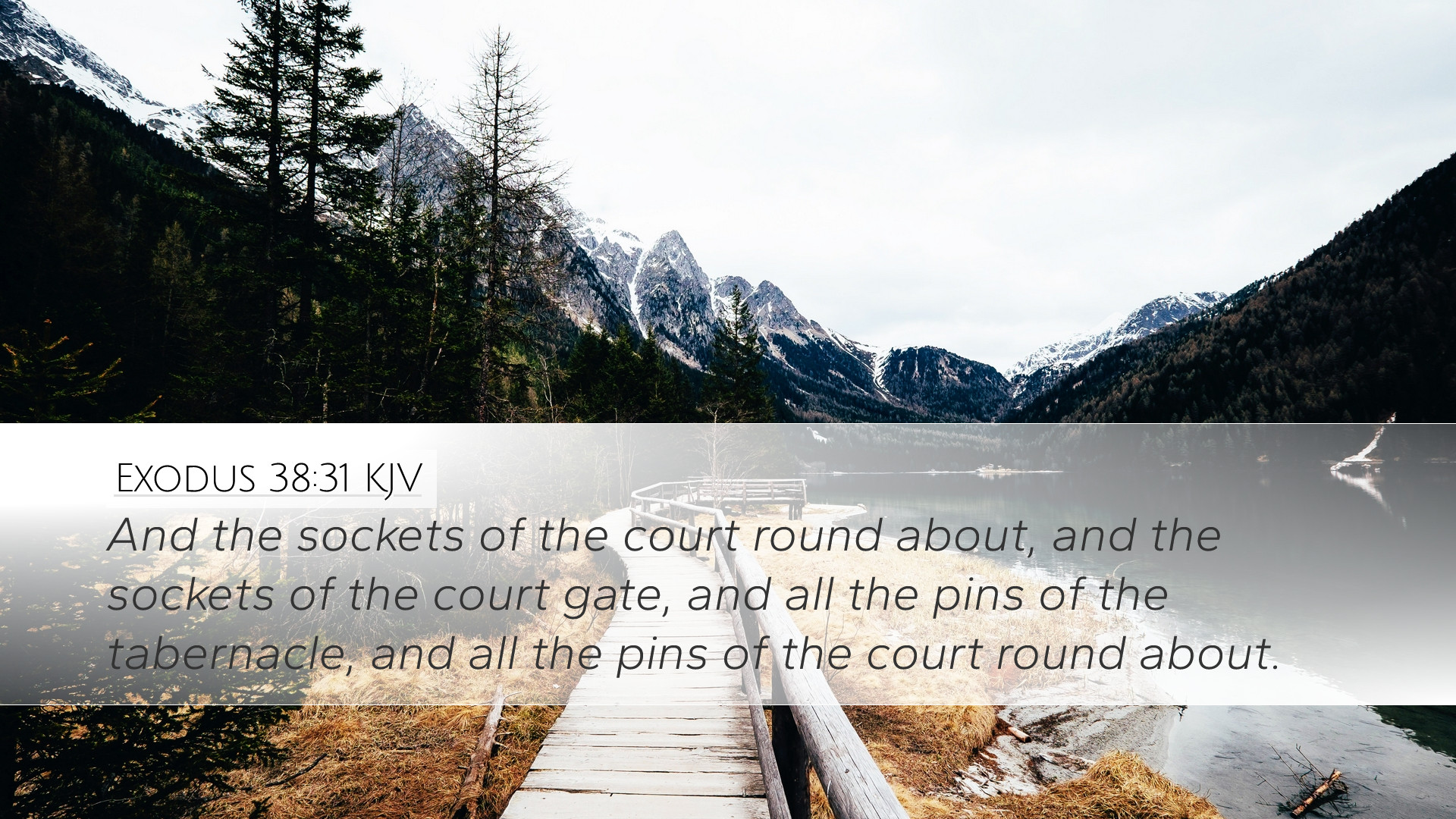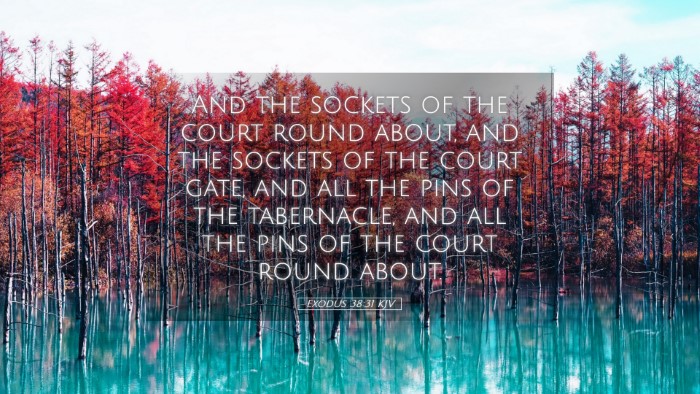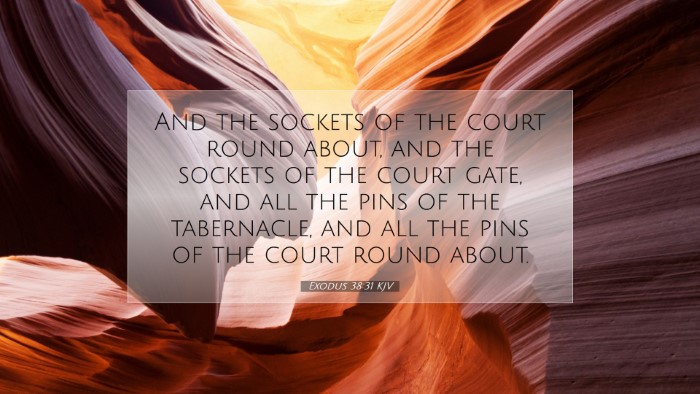Exodus 38:31 - A Commentary
Verse: “And the hangings of the court, the pillars thereof, and the sockets thereof, and the hangings for the door of the court, the pins of the tabernacle, and the pins of the court, and their cords.”
Introduction
This verse is part of the description of the construction of the Tabernacle and its surrounding court as delineated in Exodus. The specifics of the Tabernacle’s furniture, structure, and the type of materials used serve as more than mere instructions for worship; they symbolize deeper theological truths and foreshadow New Testament realities. Commentaries from notable theologians such as Matthew Henry, Albert Barnes, and Adam Clarke provide insight into the significance of these elements.
Structural Overview
In Exodus 38:31, the focus is on the physical attributes of the Tabernacle's court. Each component—the hangings, pillars, sockets, and door—has been meticulously designed, reflecting a divine order and presence.
- The Hangings of the Court: Symbolize the separation between the sacred and the profane.
- The Pillars: Denote strength and support, essential for a structure meant to house the presence of God.
- The Sockets: Represent stability and grounding, echoing the importance of a firm foundation in faith.
- The Cords and Pins: Illustrate the importance of connections in community and the securing of God's dwelling among His people.
Theological Reflections
As we delve deeper into the theological implications of this verse, it is essential to recognize how each aspect of the court's construction points to Christ and the New Covenant.
1. The Hangings of the Court
According to Matthew Henry, the hangings represented purity and separation from sin. Just as the hangings enclosed the sacred space, believers today are called to separate themselves from the world. The veil, which separates the Holy of Holies, points to Christ’s atonement—His blood making way for believers into the presence of God.
2. The Pillars and Sockets
Albert Barnes notes that the pillars establish a framework of stability for worship. Just as the pillars held the hangings, so too does Christ support the believer. The sockets serve as a reminder that our faith must be firmly grounded in Jesus, our cornerstone (Ephesians 2:19-22).
3. The Cords and Pins
In his commentary, Adam Clarke elaborates on the cords and pins which keep the hangings secure. This aspect highlights the importance of community and accountability in the faith. Just as these instruments secured the structure, fellowship among believers secures the faith community, allowing the presence of God to dwell among them.
Symbolism of the Tabernacle
The structure of the Tabernacle as described in this verse conveys the overarching theme of God’s desire to dwell among His people. Each element serves a purpose in the pursuit of holiness and worship.
1. A Place of Encounter
Exodus 38:31 signifies that the Tabernacle was intentionally built for encounter. The layout and components facilitate worship and communion with God, foreshadowing the ultimate temple—Jesus Christ, where God incarnate dwells among humanity.
2. A Reflection of Divine Order
The meticulous detail given to the construction speaks to God’s character, who is a God of order and beauty. As various components come together in unity, so does the Church, the Body of Christ, exemplify the harmony intended by God.
Conclusion
Exodus 38:31 serves as a profound reminder of God's desire for connection with humanity. It reflects the importance of holiness, community, and the divine order essential for worship. Pastors, students, and theologians should consider these themes as foundational for understanding God's presence in their lives and the life of the Church. This verse and its associated elements call us to recognize the sacred responsibility we have in worship, just as the ancient Israelites did in building the Tabernacle.


